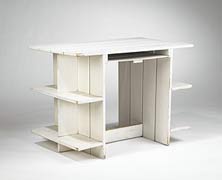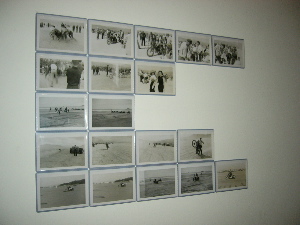Schwarz
View current page
...more recent posts
Brookings
Toward a New Metropolis: The Opportunity To Rebuild America
In short, this paper finds that:
In 2030, about half of the buildings in which Americans live, work, and shop will have been built after 2000. The nation had about 300 billion square feet of built space in 2000. By 2030, the nation will need about 427 billion square feet of built space to accommodate growth projections. About 82 billion of that will be from replacement of existing space and 131 will be new space. Thus, 50 percent of that 427 billion will have to be constructed between now and then.
Most of the space built between 2000 and 2030 will be residential space. The largest component of this space will be homes. Over 100 billion square feet of new residential space will be needed by 2030. However, percentage-wise, the commercial and industrial sectors will have the most new space with over 60 percent of the space in 2030 less than 30 years old.
Overall, most new growth will occur in the South and the West. There is tremendous variation in the total amount of buildings to be built between regions. In the Northeast, for example, less than 50 percent of the space in 2030 will have been built since 2000, while in the West that figure is about 87 percent, a near doubling of built space. Fast growing southern and western places—states like Nevada and Florida and metropolitan areas like Austin and Raleigh—will see the most dramatic growth.
Though a small component of overall growth, the projected demand for industrial space in the Midwest outpaces that of the other regions, unlike the other major land uses. States with a strong industrial presence will see the largest amount of growth in industrial space even though other areas may witness faster growth. After California, which far outpaces the nation in terms of absolute square feet of new industrial construction, the next four largest producers of industrial space are all Rust Belt states in the Midwest: Ohio, Michigan, Illinois, and Indiana. By 2030, 70 percent of the Midwest's industrial space will be less than 30 years old.
While these projections may seem overwhelming, they also demonstrate that nearly half of what will be the built environment in 2030 doesn't even exist yet, giving the current generation a vital opportunity to reshape future development. Recent trends indicate that demand is increasing for more compact, walkable, and high quality living, entertainment, and work environments. The challenge for leaders is to create the right market, land use, and other regulatory climates to accommodate new growth in more sustainable ways.
"Two employees of the owner of 111 First St. in Jersey City were arrested by the Fire Department Arson Unit Friday, but investigators are releasing no information about their arrests or the charges they face, officials said."
"The 111 First Street Arts Center is located near the waterfront in Jersey City, just across the Hudson River from the World Trade Center site. Built
in 1860?s, the famous P. Lorillard Tobacco Company, once one of the largest of our nation's tobacco manufacturers, is now the 111 Building, a unique brick architectural treasure.
The 111 First Street Building is owned by NY/NJ property owner Lloyd Goldman. For your information, investors Lloyd Goldman and Joseph Cayre joined with developer Larry Silverstein in buying the World Trade Center 99-year lease for $3.2 billion. "
111 link

Crate desk
designer:
Gerrit Thomas Rietveld
year: c.1934
manufacturer:
Metz & Co.
Painted pine
39.5"w x 23.5"d x 28"h
". . .a piece of furniture of fine wood, made wholly according to traditional methods, is shipped in a crate to prevent damage and breakage. Someone receiving such a crate at home says, at most: well packed. But it has never been established that such a crate represents a freely rendered method of carpentry aimed straight at its goal. The plain materials of which it is composed make it stronger than its precious contents. . .Therefore, there must finally be someone who chooses the crate instead of the piece of furniture."
Literature:
Complete Reitveld Furniture, Voge, pg. 88-89 fig 136
estimated value: 7000-9000 US$
sale date: 12.07.2003
location: Chicago
lot number: 222
sales title: Modernist 20 Century
[from wright online auction catalog archive]
"There it stood, this immense, playfully improbable checkerboard box, sharply delineated against a gray winter sky, hovering on angled stilts above an otherwise nondescript city street. Way above it. The box is only 30 feet high, but there's a gap of maybe 50 feet between its underside and the roofs of the four-story buildings below."
Richard Pettibone
Leo Castelli
18 East 77th Street, Manhattan
Through Dec. 23
Richard Pettibone has forged a singularly interesting career by copying in miniature what other, more famous artists have done. Copying other people's art may not in itself be highly original, but Mr. Pettibone has done it with such finely tuned wit and tenderly fastidious craft that his work comes to seem extraordinarily personal.
This show of small paintings dating from 1964 to 2004 includes some surprises: the baseball card-size, Photo Realist portrait of Brian Wilson of the Beach Boys, for example, and multipanel works that combine handmade reproductions of well-known paintings, apparently original abstract painting and images from motorcycle and porn magazines. There are also recent mysteriously dark views of an indoor swimming pool.
Mr. Pettibone's engagement with famous artworks remains the most persuasive aspect of his enterprise. His loving, diminutive recreations of Marcel Duchamp's early Cubist masterpiece "La Marie," Frank Stella's black pinstripe paintings and Roy Lichtenstein's black-and-white image of a cigarette with a long ash balanced on a table edge are more than just Oedipal reductions of powerful father figures. They are meditations on the quasi-religious iconography of modern art history and, by extension, of modern consciousness.
Mr. Pettibone never loses his sense of humility or humor. Among several paintings featuring texts made of stick-on letters is one that reads, in part, "I saw the Borofsky show and I decided I should write more. I hope people don't think I'm copying him." KEN JOHNSON for the NYT 12/11/04
opening riffs
evusa
Oskar Leo Kaufmann prefab project
"The Landmarks Preservation Commission is an 11-member panel that oversees changes to the 23,000 buildings in New York City that are either individual landmarks or within one of the city's 82 historic districts. Since the commission designates, on average, 4 new districts and 12 individual landmarks each year, a growing number of residents are subject to its rules.
Whenever anyone wants to renovate, alter, demolish or build anew in or around a landmark or a building in a historic district, commission permission is required before a building permit can be issued. "We want people who live in these places to be able to meet our goal, which is the preservation of that property and of those resources, in as simple, seamless, effortless and intelligent a way possible," Mr. Tierney said."
"The Minimum Dwelling was a response both to the acute interwar housing shortages and to the Western European avant-garde’s attempt to solve this problem. While the focus of the treatise is in fact the minimum necessary habitation for the proletarian worker, Teige had opinions on the present and historical conditions of the city and worker’s housing, contemporary avant-garde architecture and urban design. The result of this breadth of interests is a model for socialist living that applies the principles of dialectical materialism to space in constructing a liberated socialist city. Tiege’s prescriptions range from the correct ordering of social institutions to specific technical data concerning site orientation and window type to use in a room. Despite its abundance of detail, The Minimum Dwelling is an engaging read, even for non-architects. Teige’s enthusiasm hooks the reader and enables even the most stalwart capitalist to take up Teige’s rationale for his own. Architects will be interested in the English translation because Teige’s arguments established a methodology for urban and architectural critique that remains current and incisive 70 years later."
evergleem
"He didn’t know the photograph; that was my own strange idea. I showed it to him after my essay was already finished, and luckily enough he was impressed by it. For me, the reference was primarily formal, even if the depicted location of Wall Street fit into my concept like a lucky accident. What interested me most about the photo was the degree to which Strand was able to represent architecture as early as 1915 in such a way that its authoritarian dimension couldn’t be overlooked. After 1915, artists became involved with this tendency again and again. What fascinates me is how one can arrive at the plastic sculptural model that Richter developed with Eight Grey, starting out with this photographic model. Richter doesn’t, of course, mimetically repeat the authoritarian structures. "
cardboard house
thx, jim b
AfterSherryLevine
" Steidl/Edition 7L has just issued a hefty record of Warhol's contribution to world literature. ''Andy Warhol's Interview, Volume One,'' packages a diverse selection of material from the first decade of the monthly magazine, which the artist founded in 1969. The package costs $475 and comes with a carrying handle and wheels attached, so that you can cart it through the streets when another revolution comes."
casa schwarz
L1000001-1.JPG

